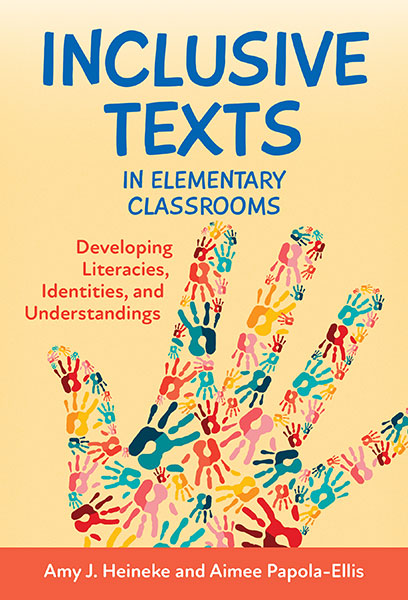Professors: Request an Exam Copy
Print copies available for US orders only. For orders outside the US, see our international distributors.
Amy J. Heineke, Aimee Papola-Ellis
Publication Date: May 13, 2022
Pages: 192

Learn how to put elementary school children’s diverse and storied experiences at the center of the curriculum.
Schools are more diverse than ever before, but the texts and materials that typify classroom curricula continue to prioritize so-called mainstream stories and perspectives. These canonical texts often exclude the nuanced identities and rich lived experiences of the very children sitting in today's classrooms. But kids thrive when they see themselves in texts and learn about the world around them by connecting with the experiences of others.
Based on the authors’ work with elementary school teachers over the last decade, this resource offers strategies for moving away from canonical texts. The authors present a four-part framework for selecting, using, and engaging students with texts that promote children’s identity development, literacy engagement and comprehension, and learning across the content areas.
The practical text provides guidance for setting learning goals that align with relevant standards and curricular directives, as well as classroom examples, teaching strategies, and reflective questions.
Book Features:
Amy J. Heineke is a professor of multilingual teaching & learning at Loyola University Chicago. Aimee Papola-Ellis is an associate professor of reading and literacy at Loyola University Chicago.
“This informative and rich resource provides readers myriad methods to develop engaging, critical, and relevant learning opportunities for students. Through their inclusive texts framework, the authors vividly illustrate how teachers can honor their students’ lives and expand their knowledge through curriculum, not just in literacy classrooms, but across content areas.”
—Ashley S. Boyd, associate professor of English education, Washington State University, author of Social Justice Literacies in the English Classroom: Teaching Practice in Action
Contents
Acknowledgments v
Introduction 1
1. Framing the Work: Responsive and Critical Lenses on Classrooms 7
2. Starting With Students: Relevant and Authentic Texts 26
3. Connecting Texts With Learning Goals: Standards and Curricula 51
4. Developing Identity and Community: Texts as Mirrors and Windows 71
5. Supporting Language Development: Literacy and Biliteracy Instruction 94
6. Deepening Understandings: Inclusive Texts Across Disciplines 113
7. Expanding the Reach of Inclusive Texts: Advocacy Work Beyond the Classroom 134
References 153
Index 173
About the Authors 185
Visit the supplemental website for resource lists by subject, teaching ideas, and more.
Professors: Request an Exam Copy
Print copies available for US orders only. For orders outside the US, see our international distributors.